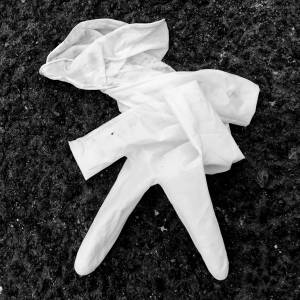The Pigeonhouse
Once upon a time there lived a man called John Pidgeon. He grew up in 18th Century Dublin and came to be caretaker of The Blockhouse on Dublin Bay. In those days there was no proper harbour or port in Dublin and where the two main rivers, The Liffey and The Dodder, flowed into the sea was a vast floodplain known as the sloblands. In the midst of this was one little dryish parcel of land called The Green Patch. Here The Blockhouse was built. Its purpose was simply to store tools (for the construction of The Great South Wall nearby) along with useful flotsam and jetsam salvaged by the Corporation's Ballast Office. It was also a 'watch house' and place of refuge for vessels, from Holyhead and elsewhere, forced to land in bad weather. It may have been built by John himself, in 1760. In any case, he became caretaker soon afterwards. While the Great South Wall was being built, the gentry would sail their pleasure craft between there and the fishing villages of Ringsend in summer, to examine the work in progress. John redesigned the Blockhouse as a place where these well-to-do Dubliners might avail of light meals and refreshments such as lemonade, served up by Mrs Pidgeon and her daughters. Eventually John purchased a boat, painted it in bright colours, and rented it out or took the oars and rowed visitors to his hostelry. The Blockhouse came to be known as Pidgeon's House or The Pigeonhouse. When it was demolished and a hotel (and later a barracks) built in its place or nearby, these became The Pigeonhouse, as did the coal-fired power station that was eventually built in 1903. By this time, the mouth of The Liffey had been narrowed and shored up by two great walls, known as the North and South Bulls and the surrounding area was now a landfill, part of The Poolbeg Peninsula. At first the power station only possessed one chimney. Another was added later –– possibly when it switched from coal to electricity –– and these enormous red & white goal-posts became the landmark they are today, dwarfing the hotel (above). The road nearby is, naturally, Pigeonhouse Road.
I think few enough people know the history. I certainly didn't till a decade or so ago and vaguely assumed that the Pigeonhouse took its name from the many pigeons that populate the area. Here's something I wrote about this peculiar history:
The Ballast Office
i.m. John Pidgeon
Plash of oars –– where are we going
with this? John and his son Ned are rowing
their customers through an eighteenth century
sea mist shifting slightly
off the sloblands between Ringsend
and where we can set foot on dryish land:
stone blocks being laid
for The Great South Wall. Lemonade
ale and good food ahoy –– a wooden shape
unmoving, not a ship
but the Blockhouse,
Pidgeon’s place, where we’ll dock.
*
Family scattered, the name holds on
for hotel, barracks, sanatorium, power station,
lengthens for Pigeon House Road –– parallel
with the East Link Toll ––
over miles of what was marshland before the Liffey
narrowed for Rogerson’s Quay,
for The Ulysses, The Swift, top-heavy
cruise and container ships, clanking Ro-Ro ferries,
bulk cargo unloading on the north docks
where the nightwatch fox
sinks its paws in the maize, leaves a blurred loop
of tracks on the shifting slope.
*
Ballast, the Office of things holding their own ––
the lighthouse, the traffic cone,
the sooty redbricked shell
of a factory whose post-industrial
shadows are cooped in the rafters:
his name spelt in heralding wing-beats, feathers
and beyond it the fogged, wobbly, piercing blip
of a light-ship
that rose, steadied to a squat lighthouse, red
as the light it blinks, starboard
for outgoing vessels, or anyone taking a stroll
to the end of The South Bull.
- 0
- 0
- Canon EOS 5D Mark II
- 1/2
- f/2.8
- 45mm
- 1250

Comments
Sign in or get an account to comment.


